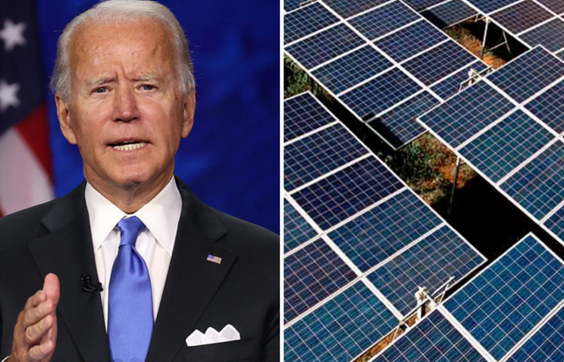The U.S. Inflation Reduction Act is accelerating demand for critical minerals and copper that are vital to energy transition technologies. However, ensuring enough qualifying supply to meet that demand faces “considerable challenges,” according to a new analysis by S&P Global.
The new study finds that U.S. “energy transition demand”—demand from decarbonization technologies such as electric vehicles, charging infrastructure, solar PV, wind and batteries—will continue to accelerate and be materially higher for lithium (+15%), cobalt (+14%) and nickel (+13%) by 2035 than was projected before the IRA was enacted in August 2022.
Energy transition-related demand 23 times higher
Demand for copper will be 12% higher by 2035 than pre-IRA projections. Copper is not currently listed as a critical mineral in the United States and does not qualify for IRA tax credits. However, its role as the “metal of electrification” makes it vital to the energy transition and demand for it will rise as it is used alongside critical minerals in energy transition applications, the study says.
Adding the post-IRA demand increases on top of demand growth that was already expected prior to the IRA becoming law means that total combined energy transition-related demand for lithium, nickel and cobalt will be 23 times higher in 2035 than it was in 2021. Total demand for copper will be twice as high, the study finds.
The study, entitled Inflation Reduction Act: Impact on North America Metals and Minerals Market utilizes a detailed bottom-up, technology-by-technology approach to project demand for the four metals from major energy transition applications, including power generation, transmission and distribution and end-markets, such as electric vehicles. The study then compares project demand post-IRA to available supply, given IRA rules around sourcing in terms of country of origin for production and processing.
Challenges securing supply
While post-IRA demand is expected to be materially higher, securing enough supply under the law’s sourcing requirements faces considerable challenges, the study says. To qualify for IRA tax credits, processing and/or extraction of critical minerals used must be in the United States and/ or in a country with which the United States has a free trade agreement (FTA); and that sourcing cannot involve a “foreign entity of concern.”
“This new comprehensive analysis shows that the Inflation Reduction Act is indeed transformative on the demand side,” said Daniel Yergin, Vice Chairman, S&P Global. “However, challenges remain in securing supply of critical minerals needed to meet growing demand and achieve its goal of accelerating the energy transition.”
Of the four materials analyzed in the study, only lithium is likely to be sufficiently supplied to the United States under the IRA’s domestic content requirements, given already-planned capacity additions in the United States and other FTA countries such as Chile, Canada and Australia, the study finds.
Subscribe now to our new monthly special newsletter for investors
Cobalt and nickel are both unlikely to be sourced at levels high enough to meet demand. While there is enough cobalt produced in FTA countries to meet the IRA domestic sourcing requirement, the United States does not currently source most of its cobalt from those countries. Doing so would require a challenging reorientation of trading patterns across several countries given intense international competition for resources, the study says.
Rare Nickel
Nickel is the most challenged in terms of supply, the study says. There does not appear to be enough nickel supply in FTA countries to meet demand under the IRA requirements—even if all primary nickel production in FTA countries was exported to the United States.
While copper is not subject to sourcing requirements under the IRA, ensuring access to enough supply to meet U.S. demand post-IRA is also at risk, the study says. The United States will become more reliant on imports as growing demand for energy transition-related end markets outpace domestic supply, the study says.
Also interesting: PV-Equipment: America and Europe gain market share
For example, the United States relies on one country, Chile, for 60% of refined copper imports. However, for Chile the United States accounts for only 20% of its refined copper exports. The United States could struggle to secure additional supplies from Chile if other markets that represent a larger share of Chilean exports also compete for that supply.
The increasing reliance of the United States on imports as energy transition demand grows places new emphasis and urgency on challenges such as long lead times and permitting complexities that prolong development of domestic resources, the study says. S&P Global data on 127 mines across the world that began production between 2002 and 2023 shows that a major new resource discovery today would not become a productive mine until 2040 or later.
Faster permitting while meeting environmental and community concerns
Copper represents a particular opportunity in the United States. The country possesses more than 70 million tons of an untapped copper endowment, equivalent to more than 20 years of U.S. copper demand, even at the level of peak energy transition-related demand in 2035, the study says.
“Timely and transparent permitting is a fundamental operational challenge to supplying metals for the energy transition, particularly in developed markets such as the United States that have high levels of transparency and both political and civil society scrutiny of policy,” said Mohsen Bonakdarpour, Executive Director, S&P Global Market Intelligence. “Expediting permitting reform while meeting environmental and community concerns has become a central topic in boosting mineral supply for the energy transition.” (hcn)








